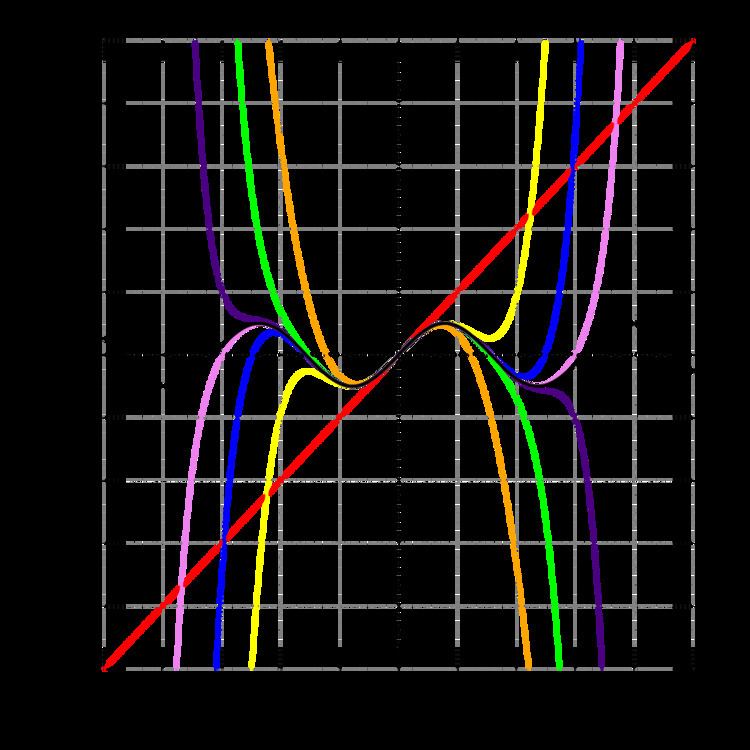 | ||
In mathematics, even functions and odd functions are functions which satisfy particular symmetry relations, with respect to taking additive inverses. They are important in many areas of mathematical analysis, especially the theory of power series and Fourier series. They are named for the parity of the powers of the power functions which satisfy each condition: the function f(x) = xn is an even function if n is an even integer, and it is an odd function if n is an odd integer.
Contents
- Definition and examples
- Even functions
- Odd functions
- Continuity and differentiability
- Algebraic properties
- Uniqueness properties
- Properties involving addition and subtraction
- Properties involving multiplication and division
- Properties involving composition
- Other algebraic properties
- Basic calculus properties
- Series properties
- Harmonics
- References
Definition and examples
The concept of evenness or oddness is defined for functions whose domain and image both have an additive inverse. This includes additive groups, all rings, all fields, and all vector spaces. Thus, for example, a real-valued function of a real variable could be even or odd, as could a complex-valued function of a vector variable, and so on.
The examples are real-valued functions of a real variable, to illustrate the symmetry of their graphs.
Even functions
Let f(x) be a real-valued function of a real variable. Then f is even if the following equation holds for all x and -x in the domain of f:
or
Geometrically speaking, the graph face of an even function is symmetric with respect to the y-axis, meaning that its graph remains unchanged after reflection about the y-axis.
Examples of even functions are |x|, x2, x4, cos(x), cosh(x), or any linear combination of these.
Odd functions
Again, let f(x) be a real-valued function of a real variable. Then f is odd if the following equation holds for all x and -x in the domain of f:
or
Geometrically, the graph of an odd function has rotational symmetry with respect to the origin, meaning that its graph remains unchanged after rotation of 180 degrees about the origin.
Examples of odd functions are x, x3, sin(x), sinh(x), erf(x), or any linear combination of these.
Continuity and differentiability
A function's being odd or even does not imply differentiability, or even continuity. For example, the Dirichlet function is even, but is nowhere continuous. Properties involving Fourier series, Taylor series, derivatives and so on may only be used when they can be assumed to exist.
Algebraic properties
There is only 1 odd even function: f(x)=0 (see below).
Uniqueness properties
Properties involving addition and subtraction
Properties involving multiplication and division
Properties involving composition
Other algebraic properties
Basic calculus properties
Series properties
Harmonics
In signal processing, harmonic distortion occurs when a sine wave signal is sent through a memoryless nonlinear system, that is, a system whose output at time
Note that this does not hold true for more complex waveforms. A sawtooth wave contains both even and odd harmonics, for instance. After even-symmetric full-wave rectification, it becomes a triangle wave, which, other than the DC offset, contains only odd harmonics.
